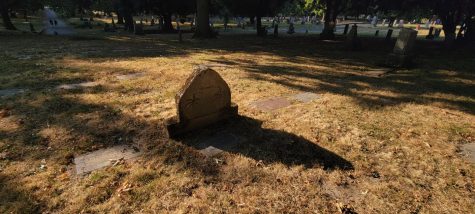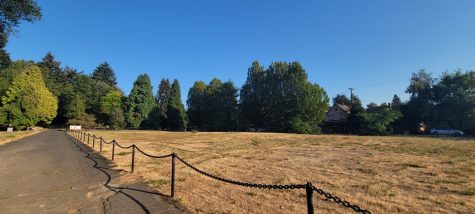The Graveless Forgotten of the Lone Fir Cemetery
September 26, 2022
With the spooky holiday season rapidly approaching, you may find yourself wanting to embrace its eerie spirit. Some may find themselves going to haunted houses or corn mazes, but if you’re looking to take an alternative route, going to a place with a creepy history may be a unique way to celebrate the season. Although there are popular places in Portland with a sinister story attached, such as the Shanghai Tunnels, you may not have heard of the chilling history of Portland’s Lone Fir Cemetery.
Lone Fir’s first burial can be attributed to Emmor Stephens, back to when Lone Fir was but a simple unnamed private plot of land. It wasn’t until 1855 did the property receive its first name, the Mount Crawford Cemetery. The cemetery began to receive a large amount of traction due to other graveyards in the area being closed down. A little over a decade later in 1866, Mount Crawford’s name was changed to the one we know today.

Although seemingly normal from a glance, the Lone Fir held dark secrets beneath its surface. These secrets can be concentrated beneath a single plot of land found in the southwest corner of the graveyard—in ”Block 14.”
The history of Block 14 began back in 1891 when City & Suburban Railway bought the property in order to bury the remains of deceased Chinese immigrant workers. This area became known as the “Chinese Burial Ground.” The bodies of the immigrant workers were kept at this site until their remains could be sent back to China in order for them to be reburied with their ancestors, as per traditional Chinese customs. An estimated 1100 Chinese immigrants were buried at Lone Fir between 1891 and 1928. It was said that the last of these remains were returned in 1948, but as found out in 2004, that was far from the truth.
The county would begin preparations to sell Block 14 for developmental purposes; certain organizations, such as the Friends of the Lone Fir Cemetery, raised concern that there still may be unclaimed and forgotten burials within the lot. As it turns out, these concerns were proven true as an archaeologist team discovered multiple counts of human remains within the plot. This would not be as concerning, as it’s simply buried individuals at a cemetery, if it wasn’t for the fact that the lot had previously been covered in asphalt to support a facilities-services property known as the Morrison Building.
Every day, workers of the Morrison Building would drive down to the site, park their cars above bones, work above forgotten corpses, and leave without knowing a thing.
To make matters even more haunting, the Chinese immigrants weren’t the only group buried on the site. As it turns out, over a hundred mental asylum patients had been buried—confined inside the walls of Block 14.
These asylum patients came from the Oregon Insane Hospital, which was run by Dr. James C. Hawthorne from 1858 until his death in 1881. Hawthorne had promised the patients who were not claimed by their family in death, a burial at the Lone Fir. It is estimated that 183 of these patients were laid to rest within the Lone Fir, not including Dr. Hawthorne himself after his passing.
In 2008, Oregon Metro now owning Block 14, made the decision to create a memorial garden to honor and remember the Chinese Immigrants and asylum patients. Currently, the plot still remains empty as plans continue to be developed.

Even with its eerie past, the Lone Fir Cemetery still is by far a beautiful site to be explored; the quiet environment gives you the time to contemplate. Now that its secrets have been brought to the surface, you should have plenty to ponder as you walk down its chilling dark, asphalt paths this October season.




M Zelda McCarthy • Sep 27, 2022 at 12:13 am
I love Lone Fir … so beautiful, peaceful n historical … a Civil War veteran is buried there . And now it is very lively w new residents … MZM